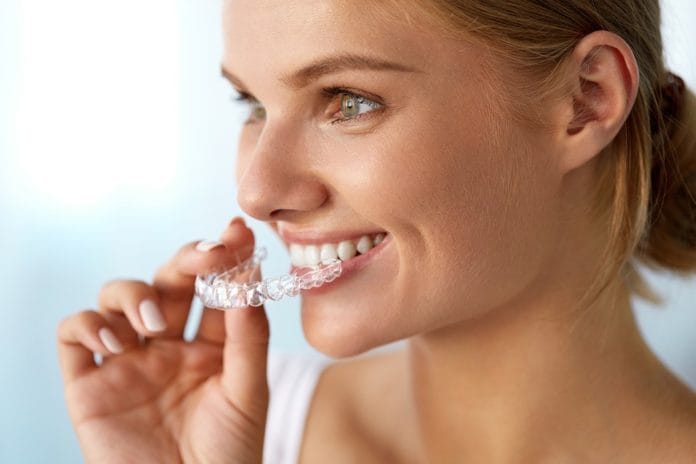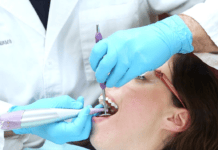The world in which we live in is centered around convenience and appearance more than ever. Take these two said factors and mix them together, and you have a booming business of mail-in orthodontics. While this may sound like the perfect combination, it is actually one to seriously contemplate.
In 2013, the first mail-in orthodontics to straighten consumers teeth was founded.[1] The company quickly gained popularity and business through multiple media outlets promising straight teeth for a fraction of the costs associated with traditional braces. Consumers take an at-home impression of their teeth that is sent back to the company, along with images that are uploaded digitally of their smile. A licensed dental professional working for the company then evaluates the impression and images of the consumer’s teeth and determines if they are a candidate for orthodontic treatment. Once a patient is approved, images of their proposed new smile is sent back to the consumer, in conjunction with a series of clear aligners. Consumers are also instructed on how long to wear each set of their aligners.
Sounds pretty cut and dry right? Unfortunately, all that glitters is not gold. There is a reason orthodontist receive an additional 2-3 years of specialized education after dental school. Orthodontists are experts in straightening the teeth and aligning the bite. Many considerations are to be made prior to orthodontic treatment. A thorough examination, including dental radiographs, of a person’s teeth is needed prior to orthodontic treatment, or one could suffer permanent damage and tooth loss, which could cost thousands of dollars to remedy. It is also advisable that a complete dental cleaning precedes any orthodontic treatment. Once a patient is cleared for orthodontics, their course of treatment should be closely monitored until completion.
Unfortunately for several, this warning comes too late. According to the American Association of Orthodontics, nearly 13% of its member orthodontists are seeing patients who have tried do-it-yourself orthodontics, with some of those attempts causing irreparable damage.[2] One man who spent $2000.00 on his mail-in aligners found that at the end of his treatment his teeth had not moved as anticipated, but more so than that, his teeth did not all occlude when closing down. According to orthodontist, Blake Borello, this is a common issue with mail-in orthodontics. This is just one reason people should take heed when considering mail-in orthodontics; patients do not have the experience to determine when things aren’t going correctly, and when they do, it’s often too late. “The DIY companies have one product to align your teeth; we have several tools to get you from point A to point B,” states Borello.[3]
Another unfortunate consumer of mail-in ortho had similar results with her molars not occluding. However, an orthodontist found more than that after examining her teeth. Radiographs revealed she had severe bone loss around her teeth, which will likely result in multiple extractions. When she attempted to reach out to the mail-in orthodontic company, they quickly reminded her that she signed a consent form stating, “Your bite may change as you transition,” and “remote clear aligners are for alignment only and do not move molars.”[4] Mail-in orthodontic companies also ask consumers to sign a pledge stating they have seen their dentist for radiographs and an exam. Companies do not, however, ask for proof or a copy of the X-ray images.[5]
Recently, the American Association of Orthodontics (AAO) has issued a “consumer alert” on its homepage warning consumers of the dangers of DIY orthodontics. The AAO has also filed complaints in 36 states with dental boards and attorney generals in reference to companies that provide aligners through a mail-in service.[2] At least three of these state boards have opened investigations. In August 2018, Alaska’s board voted to ask the state licensing department to send a cease-and-desist letter to one particular mail-in orthodontic company.[2]
While many things can be taken into the hands of consumers, DIY orthodontics is simply not one of them. The AAO suggest you consider this question: What other transforming medical treatment would you undergo without an in-person, pre-treatment evaluation or ongoing in-person supervision from a medical professional?[6] In the grand scheme of things, you will pay far less for mail-in orthodontics, but remember, you get what you pay for.
SEE ALSO: Gingival Recession: It’s Not the Toothbrush’s Fault
DON’T MISS: 7 Ways to Turn Awkward Appointments into Amazing Ones
Now Listen to the Today’s RDH Dental Hygiene Podcast Below:
References
- Mott, K. (2017). The risks and rewards of mail-order braces. [online] Modern Dental Network. Available at: http://www.dentalproductsreport.com/dental/article/risks-and-rewards-mail-order-braces [Accessed 4 Dec. 2018].
- Burger, D. (2017). ADA discourages DIY orthodontics through resolution. [online] Ada.org. Available at: https://www.ada.org/en/publications/ada-news/2017-archive/november/ada-discourages-diy-orthodontics-through-resolution [Accessed 4 Dec. 2018].
- Lundberg, R. (2018). Orthodontists worn about braces by mail. [online] Available at: https://www.wcnc.com/article/news/local/orthodontists-warn-about-braces-by-mail/275-521251898 [Accessed 5 Dec. 2018].
- Owens, L. (2017). Mail Order Braces: Is your smile worth the discount?. [online] Wrdw.com. Available at: https://www.wrdw.com/content/news/Mail-order-braces–Is-your-smile-worth-the-cost-452548583.html [Accessed 5 Dec. 2018].
- Schechtman, DDS, R. (2015). Don’t Do It to Yourself… Until You Read This First. [online] HuffPost. Available at: https://www.huffpost.com/entry/dont-do-it-to-yourselfunt_b_7038048 [Accessed 5 Dec. 2018].
- Aaoinfo.org. (2018). Questions to Consider | American Association of Orthodontists. [online] Available at: https://www.aaoinfo.org/1/online-orthodontic-companies [Accessed 5 Dec. 2018].












